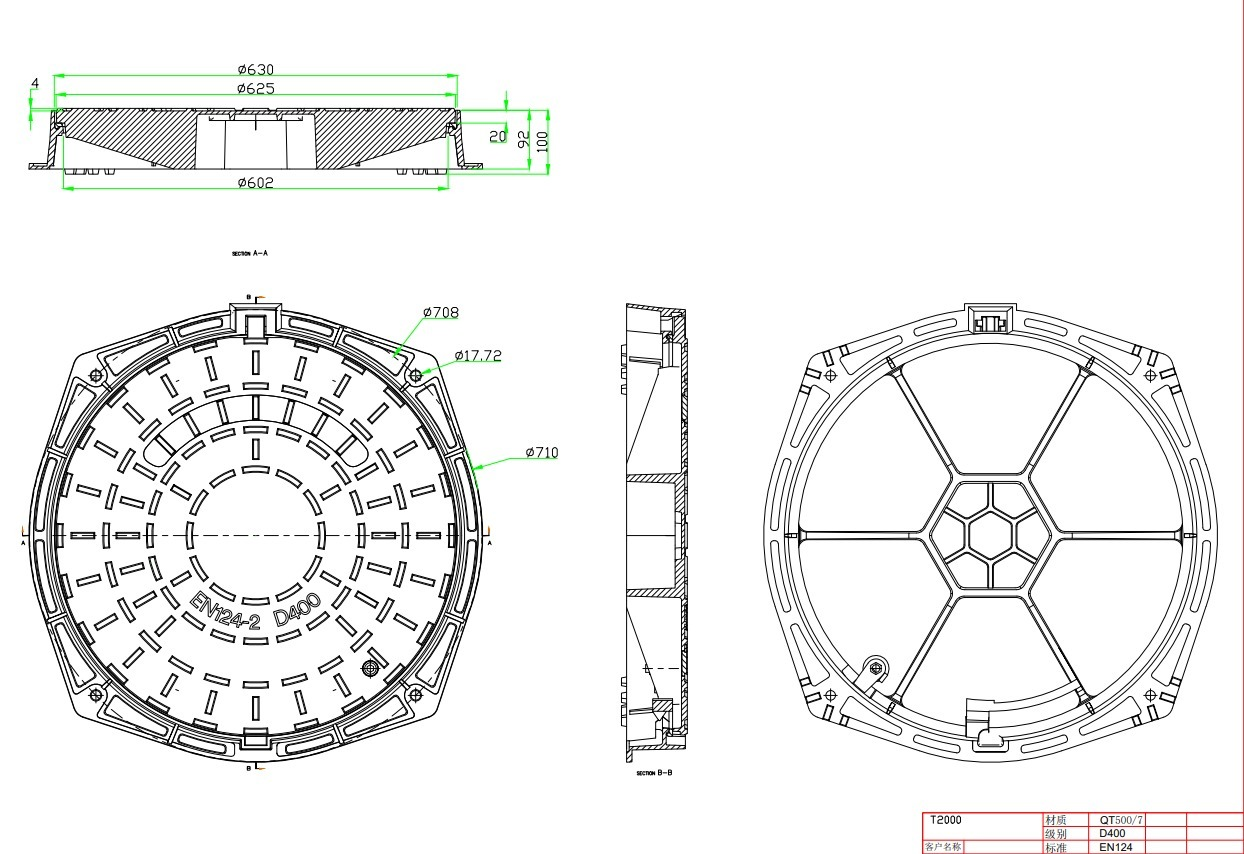locking butterfly valve
Understanding Locking Butterfly Valves A Comprehensive Overview
Butterfly valves are essential components in various industrial applications, known for their efficient flow regulation and space-saving design. Among the various types of butterfly valves, the locking butterfly valve stands out due to its unique mechanism that enhances safety and operational reliability. This article delves into the features, benefits, applications, and maintenance of locking butterfly valves.
What is a Locking Butterfly Valve?
A locking butterfly valve incorporates a locking mechanism into its design, preventing unintended operation. This feature is particularly advantageous in environments where accidental valve actuation can lead to catastrophic failures or safety hazards. The locking mechanism can be manual or automatic, ensuring that the valve remains securely in place when not in use.
Key Features
1. Design and Construction Locking butterfly valves typically consist of a circular disc mounted on a rotating shaft. The valve is constructed from materials like stainless steel, ductile iron, or PVC, depending on the application requirements. The locking mechanism is integrated into the body or the actuator.
2. Flow Regulation Like standard butterfly valves, locking versions provide excellent flow control. The disc can be turned to various angles to modulate the flow of fluids. This feature makes them suitable for throttling and isolation applications.
3. Safety Mechanism The primary distinguishing feature is the locking mechanism, which can be key-operated or lever-based. This safety feature is crucial in preventing unauthorized access or operation, thereby enhancing operational safety.
4. Compact Design Locking butterfly valves are designed to occupy minimal space, making them ideal for applications in confined settings. Their lightweight design also facilitates easier installation and maintenance.
Benefits of Locking Butterfly Valves
1. Enhanced Safety The locking mechanism reduces the risk of accidental valve manipulation, minimizing the potential for spills or leaks that could lead to environmental or safety issues.
locking butterfly valve

2. Versatility These valves are suitable for a wide range of applications, including water treatment, chemical processing, HVAC systems, and food and beverage industries. Their adaptability makes them a popular choice for many different installations.
3. Cost-Effective Locking butterfly valves often have a lower initial cost and maintenance expense compared to more complex valve designs. Their simple operation and durability lead to long-term savings.
4. Ease of Operation Despite the locking feature, these valves can be operated with relative ease. Operators can quickly unlock and adjust the valve to the desired position without special tools.
Applications
Locking butterfly valves find application in various sectors
- Water Treatment Plants In facilities where precise flow control is essential, these valves help maintain the quality and safety of water supplies. - Chemical Processing The ability to lock the valve is critical in preventing unauthorized access to chemicals, enhancing the safety of operations. - Fire Protection Systems Locking butterfly valves are often used in fire hydrant systems to ensure that water is only released when necessary. - HVAC Systems In heating and cooling applications, these valves regulate airflow while ensuring that systems cannot be tampered with accidentally.
Maintenance Considerations
Regular maintenance of locking butterfly valves is crucial for optimal performance and longevity. Here are some tips
1. Routine Inspections Check for signs of wear, corrosion, or damage. Inspections should be performed regularly to identify issues early on. 2. Lubrication Ensure that the locking mechanism and shaft are lubricated to facilitate smooth operation and prevent sticking. 3. Testing the Locking Mechanism Regularly test the locking feature to ensure it functions correctly, which is critical for safety. 4. Cleaning Keep the valve clean and free from debris to prevent obstruction and ensure effective sealing.
Conclusion
Locking butterfly valves are invaluable tools across various industries, providing not just efficient flow control but also enhanced safety features. The integration of locking mechanisms ensures reliable operations, making them a prudent choice for applications where fluid management is critical. With proper maintenance, these valves can offer long-lasting service, contributing to the efficiency and safety of industrial processes.
-
The Smarter Choice for Pedestrian AreasNewsJun.30,2025
-
The Gold Standard in Round Drain CoversNewsJun.30,2025
-
The Gold Standard in Manhole Cover SystemsNewsJun.30,2025
-
Superior Drainage Solutions with Premium Gully GratesNewsJun.30,2025
-
Superior Drainage Solutions for Global InfrastructureNewsJun.30,2025
-
Square Manhole Solutions for Modern InfrastructureNewsJun.30,2025
-
Premium Manhole Covers for Modern InfrastructureNewsJun.30,2025
